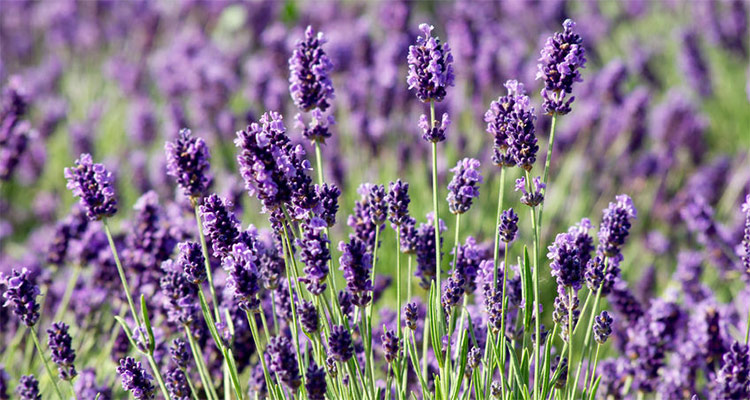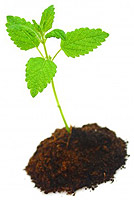Essential Oils for Spring

I personally love blending with floral essential oils more during the spring months than any other time of the year. Citrus Essential Oils are a favorite of mine all year round. With their uplifting and energizing aroma, you'll certainly find me reaching for them on upcoming rainy spring days.

Below is a list of essential oils chosen with springtime use in mind. This is a highly subjective list and is meant only as a starting point for your own exploration.
You may want to skim through the list of 130 oils contained in AromaWeb's Essential Oil Profiles area to see if there are additional essential oils that you personally like for Spring.
List of Essential Oils for Spring
Floral / Energizing / Herbaceous / Sweet Essential Oils and Absolutes
- Atlas Cedarwood
- Basil
- Bay Laurel
- Beeswax
- Bergamot
- Bergamot Mint
- Blue Cypress
- Bois de Rose
- Boronia
- Cardamom
- Carrot Seed
- Catnip / Catmint
- Citronella
- Clary Sage
- Cypress
- Dill
- Eucalyptus Globulus
- Eucalyptus Radiata
- Geranium
- German Chamomile
- Grapefruit
- Hyssop
- Jasmine
- Juniper Berry
- Kanuka
- Lavender
- Lavandin
- Lemon
- Lemon Balm
- Lemon Eucalyptus
- Lemongrass
- Lemon Myrtle
- Lemon Tea Tree
- Lime
- Linden Blossom
- Mandarin
- Manuka
- Marjoram
- May Chang
- Melissa
- Neroli
- Orange
- Palmarosa
- Peppermint
- Petitgrain
- Roman Chamomile
- Rose
- Rosewood
- Spearmint
- Tagetes
- Tangerine
- Tea Tree
- Tuberose
- Violet Leaf
- Virginian Cedarwood
- Ylang Ylang
- Yuzu
Spring Essential Oil Diffuser Blends
Below are several basic springtime diffuser blends. Create the blends by adding the proper amount of essential oils to a dark-colored glass bottle. Add the appropriate number of drops from your created blend to your diffuser following the manufacturer’s instructions.
Be sure and familiarize yourself using reputable sources for the safety and contraindications of all oils you choose to use. Make the smallest possible blend first to make sure you like the blend before doubling, tripling, etc. the recipe.
Please be responsible to find out the specific safety precautions and contraindications of the oils in the blends you choose to use.
Spring Blend #1
- 2 drops Ylang Ylang Essential Oil
- 4 drops Lavender Essential Oil
- 14 drops Mandarin Essential Oil
Spring Blend #2
- 5 drops Manuka Essential Oil
- 5 drops Petitgrain Essential Oil
- 1 drop Peppermint Essential Oil
- 9 drops Sweet Orange Essential Oil
Spring Blend #3
- 7 drops Cypress Essential Oil
- 7 drops Lavender Essential Oil
- 6 drops Juniper Berry Essential Oil
Spring Blend #4
- 1 drop Jasmine Absolute
- 2 drops Neroli Absolute
- 17 drops Yuzu Essential Oil
Spring Blend #5
- 3 drops Geranium Essential Oil
- 13 drops Grapefruit Essential Oil
- 2 drops Lime Essential Oil
- 2 drops Spearmint Essential Oil
The above essential oil blends are only several of an infinite possibility of combinations.
Citrus Essential Oils
Citrus oils, especially Sweet Orange Essential Oil is an inexpensive oil that can be included in diffuser blends all year round. See AromaWeb's Citrus Essential Oil article for descriptions of summery citrus essential oils.
Natural Insect Repellent Recipe
A number of essential oils also act as natural insect repellents. These oils include Citronella, Catnip, Lavender, Lemongrass and Eucalyptus. For a natural insect repellent recipe that uses commonly available essential oils, refer to AromaWeb's Aromatherapy Insect Repellent Recipe.
General Safety Information
Do not take any oils internally and do not apply undiluted essential oils, absolutes, CO2s or other concentrated essences onto the skin without advanced essential oil knowledge or consultation from a qualified aromatherapy practitioner. For general dilution information, read AromaWeb's Guide to Diluting Essential Oils. If you are pregnant, epileptic, have liver damage, have cancer, or have any other medical problem, use oils only under the proper guidance of a qualified aromatherapy practitioner. Use extreme caution when using oils with children and be sure to first read the recommended dilution ratios for children. Consult a qualified aromatherapy practitioner before using oils with children, the elderly, if you have medical issues or are taking medications. Before using this or any essential oil, carefully read AromaWeb's Essential Oil Safety Information page. For in-depth information on oil safety issues, read Essential Oil Safety by Robert Tisserand and Rodney Young.
Shelf Life
Important Information About the Profiles
The essential oil information provided on AromaWeb is intended for basic educational purposes only. The references to safety information, test results, constituents and percentages is generalized information. Essential oils can vary greatly in composition. The data is not necessary complete and is not guaranteed to be accurate. The essential oil photos are intended to represent the typical and approximate color of each essential oil. However, essential oil composition and color can vary based on harvesting, distillation, age of the essential oil and other factors. Profiles for several CO2 Extracts and absolutes are included within the directory, and are denoted as such.
